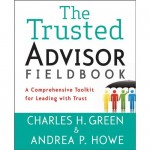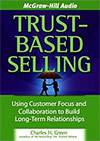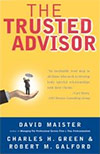Metrics: Overmeasuring Our Way to Management
Business has caught a terrible case of the measurement flu. Companies seem more focused on performance indicators than on the actual health of what they are trying to measure. Beyond this confusion of measurement, there are side effects: depersonalization, a decrease in trust, and a false sense that costs and risks are actually being managed. All three are evident in business in the last decade, and not just on Wall Street.
Imagine you’re at lunch with a very good customer. You tell him or her: “You know, we’ve been thinking. The relationship between our companies is very good. But I wonder if we could work together to make things even better than they are.”
So far, so good. Most customers will respond positively. So you up the ante. “Perhaps we should start by agreeing on where we stand now. So tell me: On a scale of 1 to 10, how would you rate our relationship?”
With some hemming and hawing, most people will serve up some kind of response. Let’s say your customer says, “Well, I’d give it a 7.8 on a scale of 10.”
Fast-forward a week. Same customer, a fresh lunch. And you say: “Remember our conversation last week? You rated our business relationship a 7.8. It’s been a good week, so how would you score us today? Are we over 8.0 yet?”
Heisenberg Principle of Human Affairs
I’m going to guess that at this point your score is about to dip precipitously. Not because of anything you did during the week, but from your overemphasis on measurement. The act of measurement itself, when overused, snarls what is being measured. Your customer decides that you’re more in love with your performance indicators than with the actual business relationship they’re supposed to describe. Your customer would be right.
At the subatomic level, the Heisenberg Principle of Uncertainty says, you can’t simultaneously measure both position and velocity; the act of measuring one renders inaccurate the measurement of the other. With apologies to Heisenberg, I’d like to suggest a Heisenberg Principle of Human Affairs: If you overmeasure a relationship, you alter the nature of the relationship itself—the very thing you’re trying to measure.
Einstein supposedly said: “Not everything that can be counted counts, and not everything that counts can be counted.” (If he didn’t say it, he should have.) Measurement has its place. Problems arise when we overdo it. There are four problems with overemphasizing measurement’s role in management.
1. Degradation by over-measurement.
When the concept of customer loyalty was first popularized in the late 1980s, the term had deep emotional connotations: it conjured up such phrases as “semper fi,” or “till death do us part.”
After two decades of overmeasurement, the term is effectively synonymous with price-based promotions to encourage repeat business. Corporate customer-loyalty programs have become all about the metrics.
The financial meltdown of recent years was in part due to overconfidence in the power of measurements. Derivatives—metrics of metrics—and ratings agencies—overseers of metrics—are two examples that turned out badly. The thing itself was obscured by fancy measurement.
The net result? In my experience—and I bet I’m not alone—loyalty itself has declined, the victim of degradation by over-measurement.
2. Dehumanization.
The term “human capital” is common these days. Note that “human” is the adjective; the modified noun is both financial and measurable. The human resources community is itself leading the charge for measurable return on human capital. The danger is that repeated references to people as financial assets risks dehumanizing them.
3. A false sense of trust.
Today’s business world depends more and more on relationships between parties. Contracts, markets, and incentives are often the preferred method for managing those relationships.
But reducing relationships to the common currency of behavioral indicators and money has a way of reducing intrinsic motivations such as obligation or ethics.
When the numbers are all that matter, we hear: “It’s not personal, it’s business.” Trust is based only in small part on numbers; in large part, it is based on personal interrelationships that get replaced by overmeasurement.
4. Increased Cost and Risk.
To a point, measurement helps. When Robert McNamara first joined Ford’s (F) finance department, he reported that payables were estimated literally by weighing the paper receipts. In such cases, a little improvement in metrics goes a long way.
But after a point, the return diminishes. Trust relationships can be less costly and time-consuming than complex legal and accounting systems—not to mention more effective. Trust is often the low-cost solution. Numbers can also give a false sense of security. Quantification looks precise; but as the securitization debacle on Wall Street showed, precision can give a false sense of security by masking greater risk.
How did we get this way? Technology has been seductive; think of the power of the spreadsheet, not to mention Moore’s Law. Consider also the recent celebration of the “hard” sciences over those such as psychology or economics. Too often this thinking has implied that lack of measurement implies irrelevance. It doesn’t. Einstein (or at least his attributed statement) was right.
Some solutions seem evident. Even if we believe that everything in principle is measurable, sometimes it’s just silly to do it.
- If you want to improve your customer relationships, metrics should not be your only choice. To borrow from Shakespeare, if you want to tell someone how much you love them, don’t count the ways. Just say them. Better yet, act them.
- If you want to improve customer and supplier relations, listening over dinner and a handshake can sometimes be more powerful than relying on the legal department.
- If you want to motivate your sales force to create deep relationships, don’t lead by putting a price and a stopwatch on every customer’s head. Emphasize intrinsic rewards as well as extrinsic ones.
Both measurement and management will be improved if we can rediscover how to think about each of them independently. Financial performance will improve, too. Another plus is the reintroduction of the human element into business. You can’t measure it, but you can’t deny its impact.





